Healthy Crops: A New Agricultural Revolution
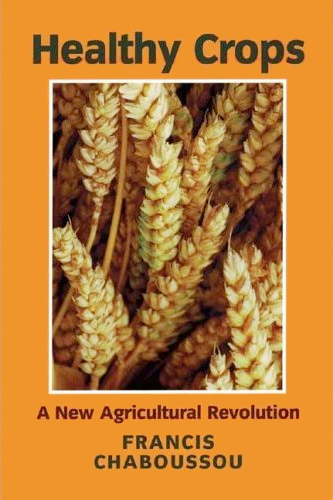 Francis Chaboussou was an agronomist at the French National Institute of Agricultural Research. He introduced the term trophobiosis to describe the symbiotic association between organisms where food is to be obtained or provided. The provider of the food is referred to as a trophobiont. The term is also used for a theory of pest resurgence on crops to which pesticides have been applied causing an increasing dependence upon pesticides. This book is a translation from the French edition of 1985.
Francis Chaboussou was an agronomist at the French National Institute of Agricultural Research. He introduced the term trophobiosis to describe the symbiotic association between organisms where food is to be obtained or provided. The provider of the food is referred to as a trophobiont. The term is also used for a theory of pest resurgence on crops to which pesticides have been applied causing an increasing dependence upon pesticides. This book is a translation from the French edition of 1985.
Although it is difficult to find any information about Francis Chaboussou, he left a legacy that can transform the way we think about insects and agriculture. In the commentary with which the book begins, Dr. Ulrich E. Loening says that Charboussou's thesis is quite simple: "most pest and disease organisms depend for their growth on free amino acids and reducing sugars in solution in the plant's cell sap." Charoussou's studies range over fifty years, and his conclusions as to the how and why the free amino acids and reducing sugars are produced in the sap are the subject of this book.


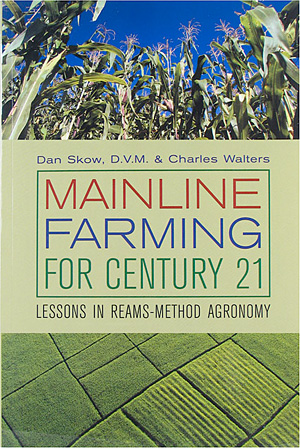 Charles Walters is the founder and head of Acres USA, which is a forum for organic farming. Acres publishes many books on all aspects of farming, and holds an annual conference in the heartland of the US. This organization is on the cutting edge of agronomy in this country. Dan Skow is a veterinarian and a student of the late Carey Reams. Many of Dr. Skow's lectures can be found on the Acres website as DVDs and audio tapes. Charles Walters has written numerous articles and books, and his works can be found on that site as well.
Charles Walters is the founder and head of Acres USA, which is a forum for organic farming. Acres publishes many books on all aspects of farming, and holds an annual conference in the heartland of the US. This organization is on the cutting edge of agronomy in this country. Dan Skow is a veterinarian and a student of the late Carey Reams. Many of Dr. Skow's lectures can be found on the Acres website as DVDs and audio tapes. Charles Walters has written numerous articles and books, and his works can be found on that site as well. 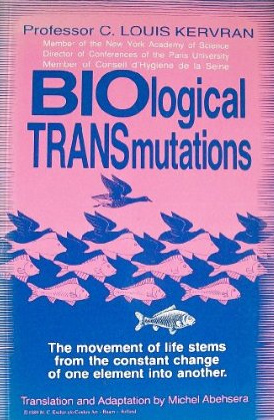 BREAKING NEWS!!! LEAD INTO GOLD! Scientists Report Lab Success in Transmuting Lead into Gold. Exclusive Report to the Bionutrient Food Association. READ IT HERE!! That would get everyone's attention, yes? But really, these days, who cares? I would rather have bought Intel at $6. Now, there's a gold mine. The fact is, we haven't had much success transmuting lead into gold, and what we have transmuted usually turns out to be radio-active. But what if everything around us, including us, was transmuting elements all the time without giving it a moment's thought? You would think that would be big news---and you would be wrong. I have been reading in the fields of nutrition and agriculture for years and this is the first I have heard of it even if the ideas have been around since 1799. Vauquelin, a French chemist found that hens excreted in feces and egg more lime than existed in the oats he fed them. In 1822, another French man, Choubard, germinated same watercress seeds in an inert dish (glass) and found that the young plants contained minerals that did not exist in the seeds. In 1844, Vogel found that watercress plants contained more sulfur than was in the seeds when none was added. In 1875, Von Herzeele concluded that there was a transmutation of elements occurring when he grew plants in a well-studied medium (sic), and found discrepancies in the weights of magnesium. In 1960 these studies were published by Baranger, but he was scooped by Louis Kervan, who in 1959 published the results of his years of experiments and announced to the world that not only molecules but atoms themselves can be transformed. Naturally, Kervran was ridiculed but he also received some strong support. Ultimately, scientists from around the world and the governments of Russia and China invited him to come and train their scientists.
BREAKING NEWS!!! LEAD INTO GOLD! Scientists Report Lab Success in Transmuting Lead into Gold. Exclusive Report to the Bionutrient Food Association. READ IT HERE!! That would get everyone's attention, yes? But really, these days, who cares? I would rather have bought Intel at $6. Now, there's a gold mine. The fact is, we haven't had much success transmuting lead into gold, and what we have transmuted usually turns out to be radio-active. But what if everything around us, including us, was transmuting elements all the time without giving it a moment's thought? You would think that would be big news---and you would be wrong. I have been reading in the fields of nutrition and agriculture for years and this is the first I have heard of it even if the ideas have been around since 1799. Vauquelin, a French chemist found that hens excreted in feces and egg more lime than existed in the oats he fed them. In 1822, another French man, Choubard, germinated same watercress seeds in an inert dish (glass) and found that the young plants contained minerals that did not exist in the seeds. In 1844, Vogel found that watercress plants contained more sulfur than was in the seeds when none was added. In 1875, Von Herzeele concluded that there was a transmutation of elements occurring when he grew plants in a well-studied medium (sic), and found discrepancies in the weights of magnesium. In 1960 these studies were published by Baranger, but he was scooped by Louis Kervan, who in 1959 published the results of his years of experiments and announced to the world that not only molecules but atoms themselves can be transformed. Naturally, Kervran was ridiculed but he also received some strong support. Ultimately, scientists from around the world and the governments of Russia and China invited him to come and train their scientists.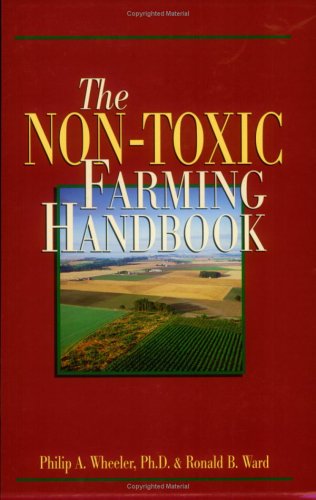 The foreward to
The foreward to 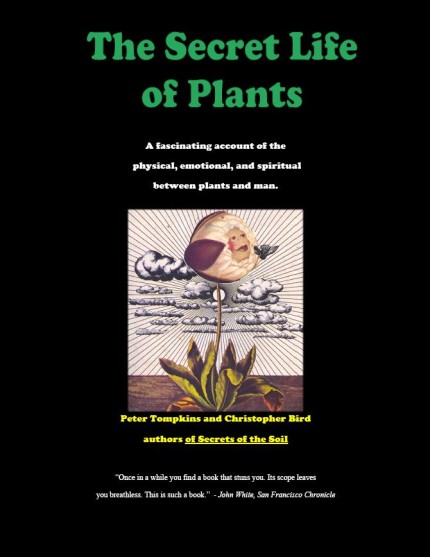 When
When 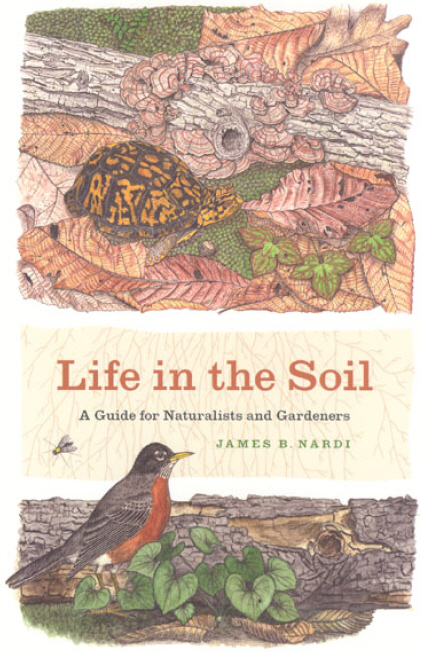 Soil is that dark stuff beneath our feet. Or it is dirt. Or it is the digestive system of plants. The more knowledgeable we become about the soil the more amazing it becomes. We can understand cation and anion exchange, or how clay works to humidify a soil, or how to read a soil report and successfully amend our soil but that tells us nothing about the teeming multi-trillions of denizens that dwell in our gardens and fields.
Soil is that dark stuff beneath our feet. Or it is dirt. Or it is the digestive system of plants. The more knowledgeable we become about the soil the more amazing it becomes. We can understand cation and anion exchange, or how clay works to humidify a soil, or how to read a soil report and successfully amend our soil but that tells us nothing about the teeming multi-trillions of denizens that dwell in our gardens and fields. 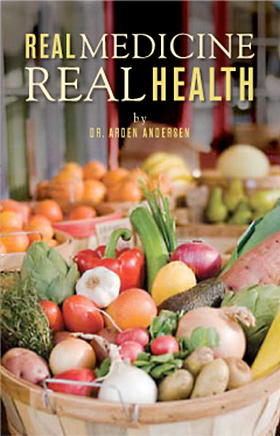 Arden Anderson is both a doctor and a farmer. As a doctor he helps his patients take dynamic control of their health using proven therapies and diet; as a farmer he has long made the connection between healthy and nutritious foods grown in rich soils and the health and vitality they offer to us. In his introduction he mentions several doctors and researchers whose work has been suppressed because it contradicts methods promoted conventional medicine, industrial agriculture, most land grant colleges and even the Department of Defense. Dr. Arden's book is filled with solid advice about diseases modern medicine often cannot alleviate, much less cure. He advocates learning about our bodies using tests that expose our allergies, eliminating toxins and heavy metal contamination from our bodies, emphasizing nutrient dense foods and supplements and, in many cases, obtaining nutrients blended specifically for an individual to target a specific illness.
Arden Anderson is both a doctor and a farmer. As a doctor he helps his patients take dynamic control of their health using proven therapies and diet; as a farmer he has long made the connection between healthy and nutritious foods grown in rich soils and the health and vitality they offer to us. In his introduction he mentions several doctors and researchers whose work has been suppressed because it contradicts methods promoted conventional medicine, industrial agriculture, most land grant colleges and even the Department of Defense. Dr. Arden's book is filled with solid advice about diseases modern medicine often cannot alleviate, much less cure. He advocates learning about our bodies using tests that expose our allergies, eliminating toxins and heavy metal contamination from our bodies, emphasizing nutrient dense foods and supplements and, in many cases, obtaining nutrients blended specifically for an individual to target a specific illness.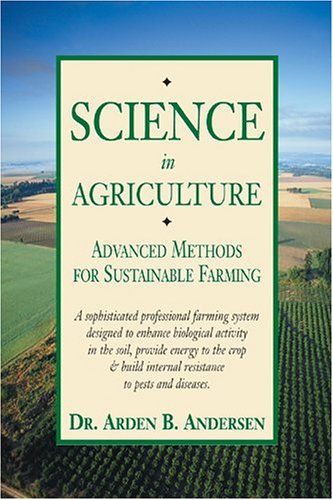 Dr. Andersen has written a comprehensive manual on creating and maintaining non-linear, harmonic and dynamically biologically diverse, mineral rich soil, free of pesticides, harmful fertilizers, deficient or excessive nutrients and able to sustain the growth of plants from seed to fruit while maintaining high brix readings and energy in both plant and soil. In the author's note dated August 2006, Dr. Andersen says: "Always be conscious of the fact that the purpose of agriculture is to produce food for people, and, thus, food must have comprehensive nutrition suitable for people..."
Dr. Andersen has written a comprehensive manual on creating and maintaining non-linear, harmonic and dynamically biologically diverse, mineral rich soil, free of pesticides, harmful fertilizers, deficient or excessive nutrients and able to sustain the growth of plants from seed to fruit while maintaining high brix readings and energy in both plant and soil. In the author's note dated August 2006, Dr. Andersen says: "Always be conscious of the fact that the purpose of agriculture is to produce food for people, and, thus, food must have comprehensive nutrition suitable for people..."